The Rosewill Photon 1050W Review
by E. Fylladitakis on March 24, 2015 8:00 AM EST- Posted in
- Cases/Cooling/PSUs
- Rosewill
- 1050W
- Sirfa
Cold Test Results
For the testing of PSUs we are using high precision electronic loads with a maximum power draw of 2700 Watts, a Rigol DS5042M 40 MHz oscilloscope, an Extech 380803 power analyzer, two high precision UNI-T UT-325 digital thermometers, an Extech HD600 SPL meter, a self-designed hotbox and various other bits and parts. For a thorough explanation of our testing methodology and more details on our equipment, please refer to our How We Test PSUs - 2014 Pipeline post.
Even though only barely, the Rosewill Photon 1050W does honor its 80Plus Gold certification badge. The energy conversion efficiency reaches 92.2% at 50% load, with an average of 90.7% within the nominal load range (20% to 100% of the unit's capacity). At low loads the unit performs very well, maintaining an efficiency of 85.6% at 10% load and 78.5% at just 5% load.
The thermal control circuitry of the Rosewill Photon 1050W seems to favor acoustics over thermal performance, allowing the internal temperatures of the unit to get a little higher so that the fan will not be as noisy. At room temperature, the Photon 1050W is almost entirely inaudible up to 50% load, which is an output of over 500W. After that point however, the fan will start increasing its speed sharply and becomes clearly noticeable.


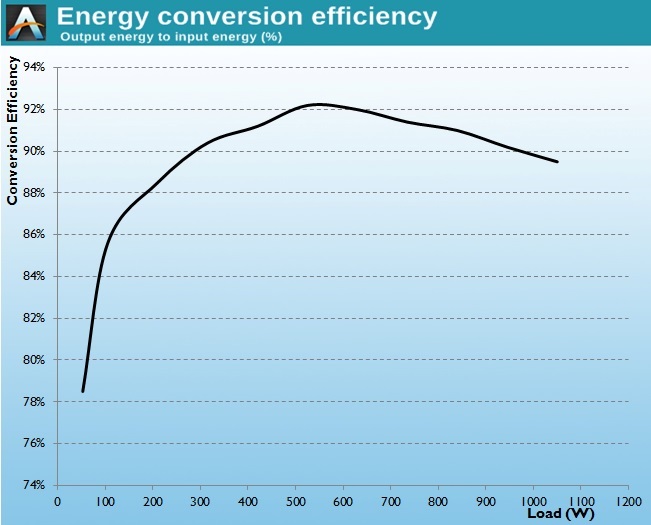
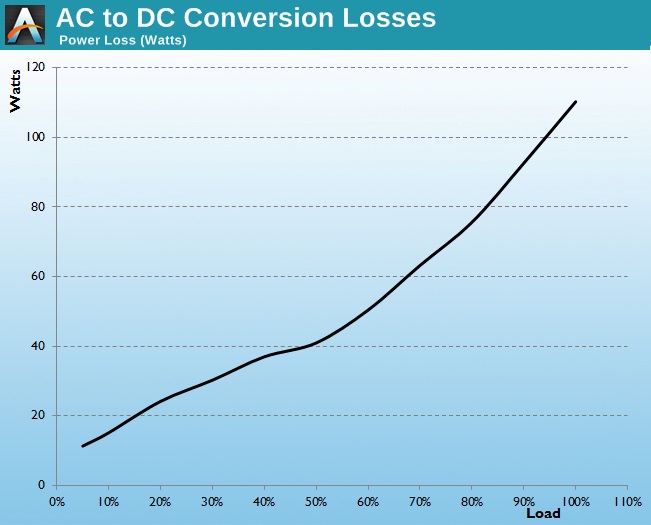
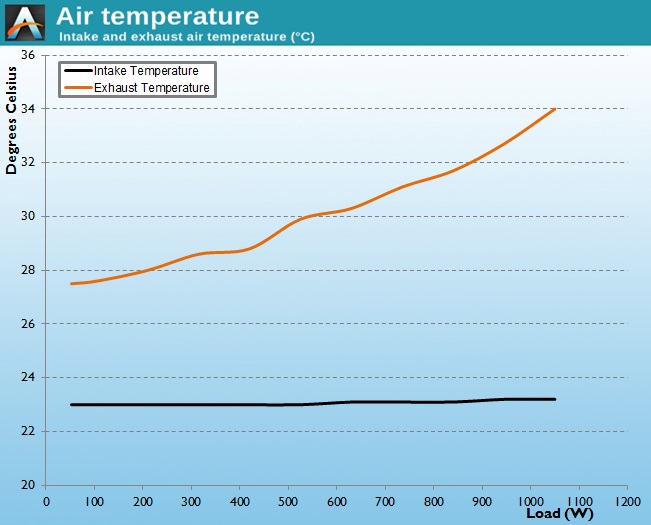
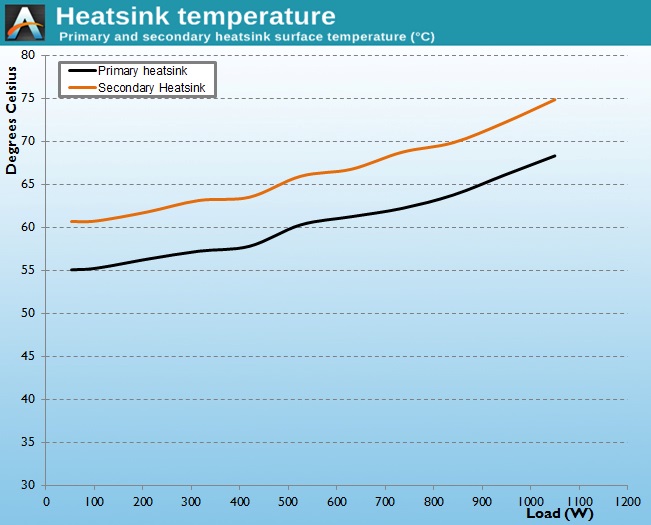
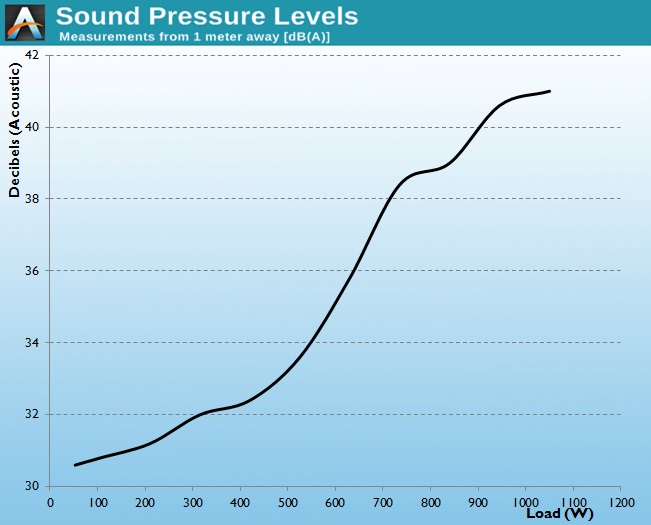








42 Comments
View All Comments
DanNeely - Tuesday, March 24, 2015 - link
Am I correct in thinking that this PSU, and other recent models capable of producing their entire output rating at 12V (give or take rounding on the amperage) are pure 12V designs internally that then use DC-DC converters to make the 3.3/5V rails instead of the traditional design that had separate circuitry for the 3.3/5v and 12v rail. With the older design having problems in cross load tests (when one side was maxed and the other only had a minimum load), the change in design seems a reasonable way to handle the shift of almost everything on the mobo to 12V operation; but I haven't seen it confirmed anywhere.MrCommunistGen - Tuesday, March 24, 2015 - link
Yes, many modern power supplies are built on a platform that only does AC to 12V DC, then use DC to DC conversion to get the 5V and 3.3V rails. I can think of all kinds of reasons that might provide cleaner power or be more efficient, but I'll leave that discussion to the experts.DanNeely - Tuesday, March 24, 2015 - link
Is the -12V (used for RS232) done that way too, or does it still get a special side circuit like the 5V standby.Gigaplex - Tuesday, March 24, 2015 - link
Why are the PSU reviews disproportionately focusing on 1kW and higher units? Even a high end SLI/Crossfire rig will struggle to load these PSUs. Especially with Intel and NVIDIAs latest power efficient architecture. How about some more reviews on units likely to be utilised by us mere mortals not doing quad Titan SLI?chlamchowder - Tuesday, March 24, 2015 - link
I agree. It's cool to read about ridiculously high end units. But few people are using dual graphics cards, and even fewer are going with more. I'd love to see reviews on lower priced units.For example, I recently built a computer with <400W power requirements. So, I got a $40 EVGA 500W supply - the cheapest 80+ supply I could find. There were approximately zero reviews of that unit on review sites (but plenty of user reviews on Newegg, for what that's worth).
For anyone who's wondering, that supply (100-W1-0500-KR R) is nice and quiet, even when feeding an overclocked FX-8350.
TomWomack - Tuesday, March 24, 2015 - link
I agree entirely; a review of PSUs starting from the absolutely cheapest, determining which ones work adequately, would be really useful. An i7/4790K with 16G memory and an SSD is a 150W system; to learn, with the kind of confidence that one of Anandtech's comprehensive reviews provide, that a $20 PSU from newegg is adequate would be quite helpful.jabber - Tuesday, March 24, 2015 - link
Hear hear! The number of people who look at this site that really really need such a PSU is probably less than 5%. Please lets have more reviews in the 450-750W range.jabber - Tuesday, March 24, 2015 - link
Oh and some nice reviews of specialist 200-400W would be good too.FunBunny2 - Saturday, March 28, 2015 - link
Yeah, but... AT's New Overseers clearly are going down the Apple Road: cater to the 20% rich and dumb enough to drop large coin on useless bling.gsuburban - Sunday, June 28, 2015 - link
Agreed. I don't use graphics cards any longer for computing, Intel HD Graphics will do. Thus, a PSU's total wattage isn't a main focus while the quality of it is. 650 watts is our limit in the long run for a non-discrete graphics machine and 750 to 850 with one.